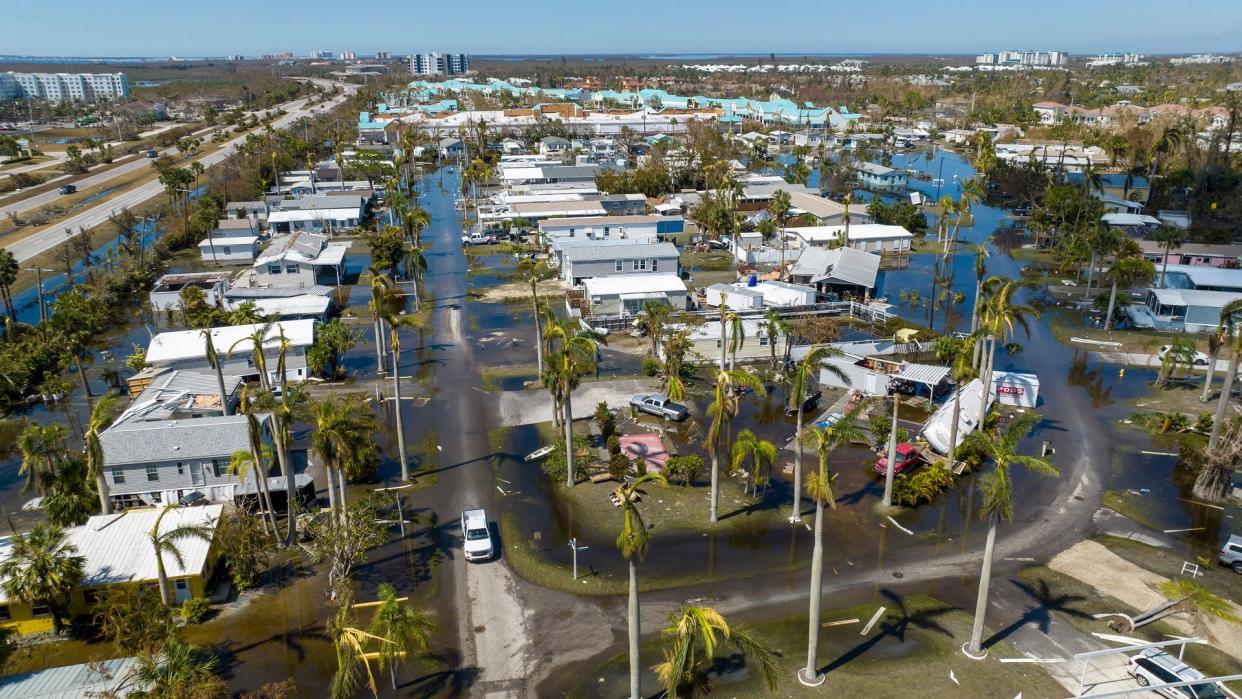Flood Insurance: Most Central Florida Homeowners Not Covered — What Help Is Available?

Home insurance policies cover a range of natural disasters such as wind, hail, lightning strikes and wildfires, but they don’t typically cover earthquakes or floods. That’s a huge problem in Florida, where thousands of homes were damaged during Hurricane Ian — many of which suffered flood damage.
See: 4 Things You Didn’t Know Were Covered by Renters Insurance Following Natural Disasters
Find: This Credit Score Mistake Could Be Costing Millions of Americans
Roughly three-quarters of single-family homes in coastal Lee County — where Ian made landfall — are not covered by federal flood insurance, CNN reported. Once you move further inland, that percentage goes even higher.
About 96% of single-family homes in Seminole County are not covered by flood insurance, while 97% of homes in Orange County and 98% of homes in Polk County aren’t covered. Each of those counties reported significant flooding during Ian.
“The most concerning factor coming out of the storm and all the losses is the lack of flood insurance, particularly in the Central Florida area,” Mark Friedlander, spokesperson for the Insurance Information Institute, told CNN.
Consulting firm Milliman estimated about 18.5% of homes in counties that were under an evacuation order had federally issued flood insurance, NPR reported. In areas under an evacuation order that were outside of high-risk zones, however, only 9.4% of homes had a policy.
Related: Does Renters Insurance Cover Hurricane Damage in Florida?
In Seminole County, located northeast of Orlando, more than 5,200 residential buildings were damaged by the Hurricane Ian, mainly due to flooding. About 3,000 buildings were damaged in Polk County, 1,200 in Orange County, and at least 4,000 in Volusia County on Florida’s eastern coast. Those figures are likely to rise as damage assessment teams reach more areas.
Homeowners without flood insurance do have other options for recouping losses, but these are limited. As CNN noted, one option is to apply for other government aid such as the Federal Emergency Management Agency’s (FEMA) individual assistance programs. Those payments are capped at about $38,000. In past cases following hurricanes, the payments typically ranged between $5,000 and $10,000.
“The U.S. disaster programs presume that homeowners are insured,” Roy Wright, the former chief executive of FEMA’s National Flood Insurance Program, told CNN. He added that individual assistance programs are not intended as safety nets but more as a way to lend a helping hand.
Another possibility is that Congress might pass additional disaster aid, similar to what happened after previous major hurricanes such as Katrina and Sandy. However, it could take months for the funding to be approved and distributed to affected communities.
“Unless you have flood insurance, the federal government is not going to give you enough assistance to rebuild your home,” Rob Moore, water and climate team director at the Natural Resources Defense Council, told NPR.
Explore: As Inflation Ravages Budgets, How Can Your Car and Home Insurance Save You Money?
Learn: What Kind of Disaster Relief Jobs Are There in Florida?
Most experts advise homeowners who live in flood-prone areas to buy separate flood insurance because it’s the best way to ensure you’ll be covered for damage.
More From GOBankingRates
This article originally appeared on GOBankingRates.com: Flood Insurance: Most Central Florida Homeowners Not Covered — What Help Is Available?
